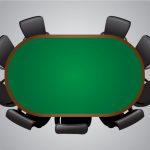Contents
In a bit of a departure from the cash game focus that I normally have, I’m going to cover some basic to intermediate ideas involving SNG endgames. We’re going to start with some basic game theory concepts as regards heads-up spots, and we’re going to go from there. The idea here is to provide some information to players who are looking to get into sit-and-go tournaments but who aren’t sure they want to invest too much money in books or training videos.
Some Important Points to Note
There are a few points that I need to make before I get into this series. First, I will be assuming that you understand ICM (here’s a guide on FTR) and how it affects tournament play as far as how it’s different than cash games. Second, I’ll be assuming that you know how to use basic tools like an ICM Nash Calculator (link to the one I’m using). Third, we’re going to approach this series from the ending with the more simple scenarios and work backwards. With that out of the way, let’s get started.
A Starting Point
In a heads-up NLHE tournament scenario, assume you both start with 4bb. The unexploitable strategies, as shown from the ICM calculator above, are as follows:
- The SB should push with 78.3% of hands: 22+ Jx+ T2s+ T3o+ 92s+ 95o+ 83s+ 85o+ 74s+ 76o 64s+ 53s+.
- The BB should call with 82.2% of hands: 22+ Tx+ 92s+ 95o+ 82s+ 85o+ 73s+ 75o+ 63s+ 65o 53s+ 43s.
So here’s the way this breaks down in terms of game theory. If the BB is calling with less than 82.2 percent of hands, that means that the SB should adjust by shoving with more than 78.3 percent of hands. Along the same lines, if the BB is calling with more than 82.2 percent, then the SB should adjust by shoving with fewer than 78.3 percent of hands.
It’s basically a balancing act on a see-saw. The unexploitable strategies (aka Nash equilibriums) act as the fulcrum. If the BB’s strategy deviates in one direction, then the SB should adjust by deviating in the appropriate direction, and vice versa. For example, if the SB decides to shove with fewer than 78.3 percent of hands, then the BB should adjust to exploit that by folding more than he would at the unexploitable point since his increased folding percentage will not be exploited by the SB.
Once you understand this dynamic of how the unexploitable strategies work as a starting point and that everything else is about adjusting to that starting point, then you can really get started on beating people down in these types of games. It’s easy to find charts and things of that nature for learning when you should be pushing or calling with certain hands based on starting stack sizes, and that’s something you should put some time into. After you’ve got a hold on that, then it’s time to start picking up reads and using them to your advantage.
Picking Up on Patterns
To be able to adjust well to opponents, we need to pay attention to the hands that they show up with. This will tell us if they are playing in very exploitable ways. You also need to know what type of information isn’t really all that important to note so that you don’t waste time and resources.
Suppose that you’re in the BB with J9s heads-up in a tournament setting, and there are 6bb starting stacks. The SB shoves, you call, and the SB turns over 52o. Right away, this is a very important piece of information because it shows that the SB was shoving a range that was much wider than the unexploitable range of about 70.1 percent of hands. It’s very much worth taking a note on this, and if you see this Villain make a couple of wide shoves like this heads-up, then you can put a lot of faith in the notion that adjusting in a major way would be a good idea here.
On the other hand, if the SB was to show up with AJo, that wouldn’t tell you much of anything. It’s not worth taking a note on this because it’s obvious that any Villain who isn’t folding like 90 percent of hands would shove this particular hand.
Deeper Stacks
Playing with stacks of more than 10 or 12 big blinds is a bit more complicated since it gets into situation where shoving pre-flop isn’t necessarily the best play. What can happen a lot of the time is that you’ll be making a min-raise or a raise to 2.5 times the big blind, and then a number of things can happen.
Your opponent will be able to shove sometimes, and there will be a body of theory around that which you will need to look into. There’s also flop play if your opponent calls which will usually just involve a bet or two after the flop. You can imagine a minraise before the flop leading to a 4bb pot and 10bb remaining stacks if you started with 12 big blinds. This is enough for a bet and a raise, and you can see that this is getting sufficiently complicated very quickly.
Moving Forward
Next week, we’re going to look at some basic ideas on how to analyze these types of situations and what tools you can use if you want to go further. From there, we’re going to expand into three-way scenarios involving a player on the bubble like you often see with six-man SNG tournaments.
Leave a Comment Below!
Submit your review | |










